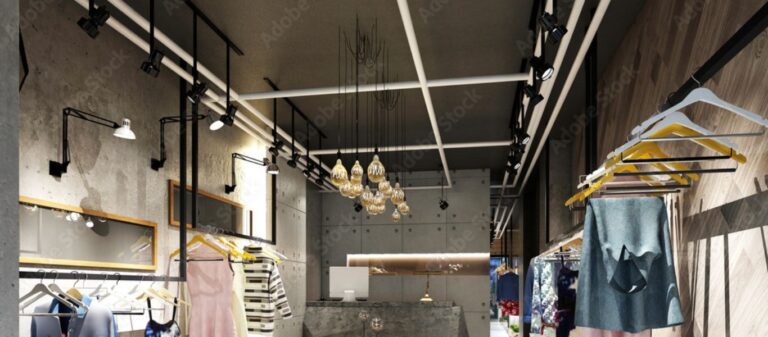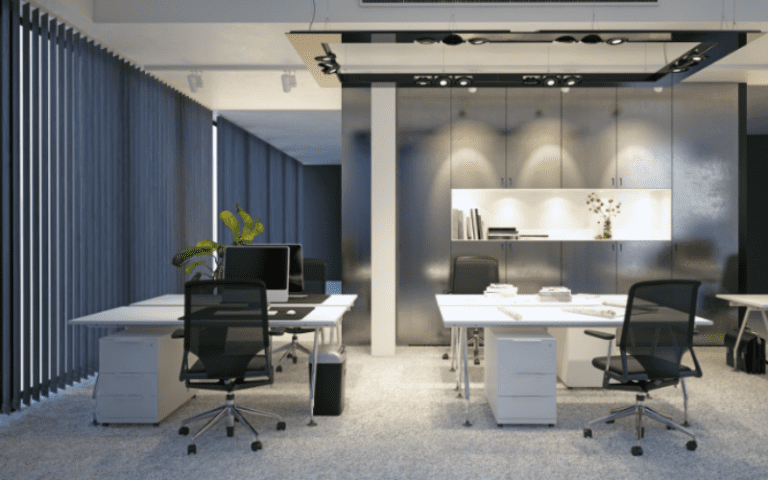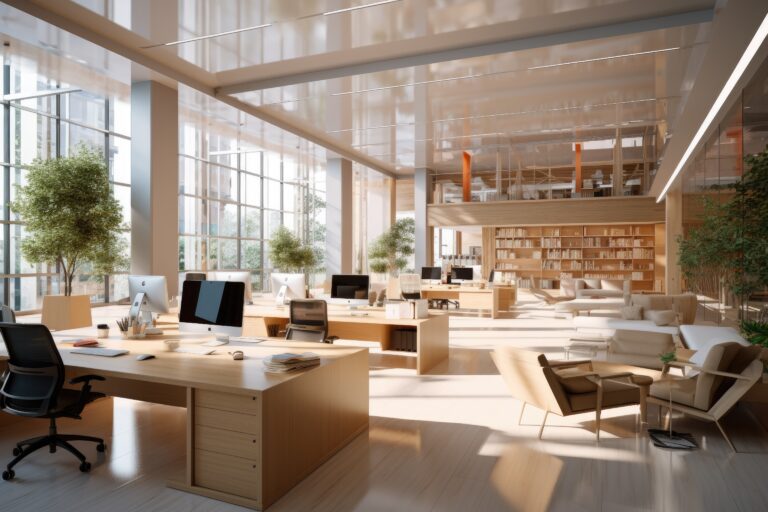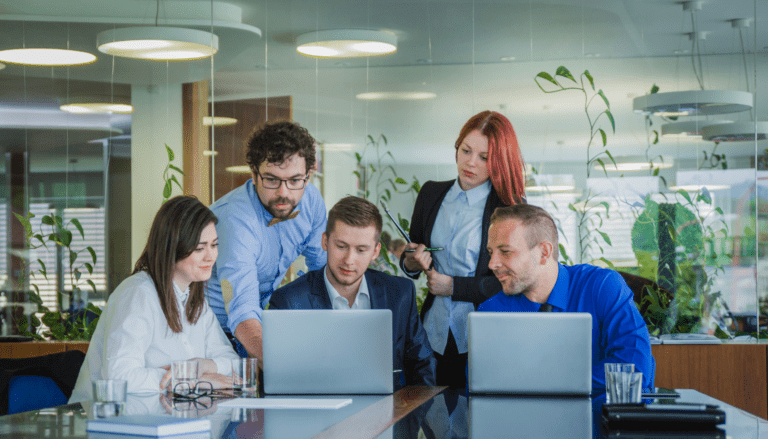More and more organizations have been switching to hybrid work models as they adapt their workplaces around the world. The strategy lets employees work from home and in the office, accommodating their needs for flexibility. Yet transitioning to a hybrid work model involves more than just adjusting the schedule; it demands deliberate workplace design. In this article, we examine three key areas to address in your office fitout specifically for a hybrid workforce– workplace planning advisory services and creating the right tech-savvy atmosphere.
Understanding the Hybrid Work Model
Hybrid work focuses on flexibility It combines the benefits of remote working (e.g. shorter commutes and fewer distractions) with those associated with in-person collaboration. A long-term 50/50 split, as per Shopify’s new policy? But this has its own set of difficulties. Organizations lack the motivation to develop their physical spaces which leads them down a slippery slope progressively towards an undesirable and unproductive rut, heavily magnified by employees not always being at desks.
Creating a Workplace Strategy
Workplace strategy primarily makes the first building blocks of successfully shifting to hybrid work style. This plan should align with your company objectives and the special needs of its team members. This will provide the flexibility to enable both remote and in-person workspaces.
- Assess current and future needs: Begin by learning how your staff will utilize the space. Are there days when most staff will be at the office? Will particular teams require separate collaborative spaces? By answering these questions, you may determine which vital features your workplace fitout must support.
- Consultative Services: Working with consultative services may be quite beneficial during this phase. These pros can give insights into the most recent workplace trends, make data-driven recommendations, and assist you in designing a space that matches your specific needs. Their knowledge guarantees that your workplace fitout is both functional and future-proof.
Embracing Flexibility in Design
A hybrid work environment relies heavily on flexibility. The typical workplace layout, which features rows of allocated workstations, is becoming outmoded. Instead, businesses are adopting more dynamic design that can be readily modified to meet changing requirements.
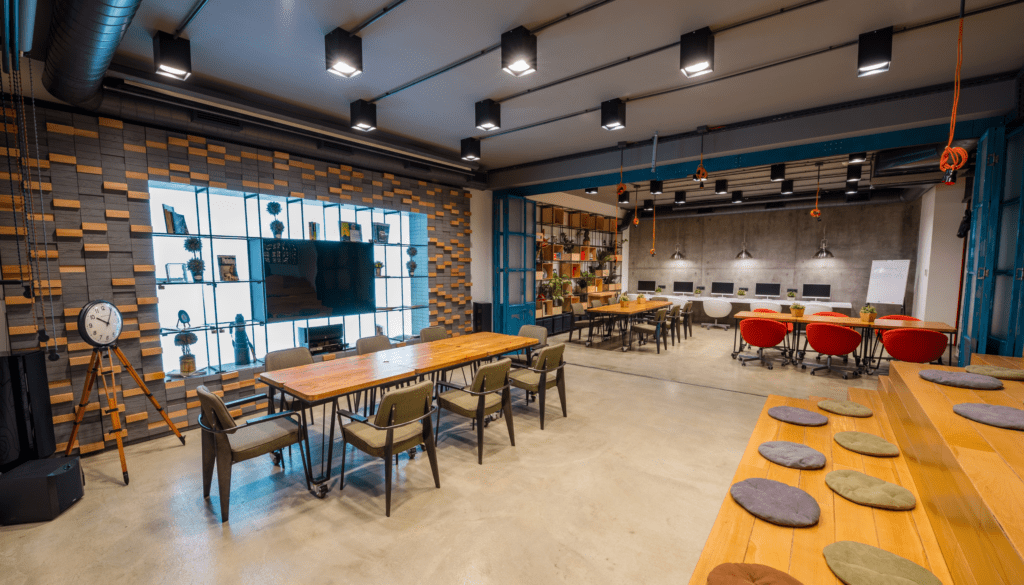
- Modular Furniture: Invest in modular furniture that can be rapidly reconfigured. For example, moveable desks, seats, and dividers enable teams to establish collaborative or private areas as needed. This flexibility guarantees that your workplace can accommodate changing amounts of in-person employees on any given day.
- Multi-Purpose Spaces: Create places that can fulfill many roles. A huge conference room can be used as a training area or partitioned into smaller meeting rooms. Breakout rooms can be utilized as casual meeting places or quiet zones for focused work. This method maximizes the utilization of available space and guarantees that no region is underused.
Creating a Tech-Savvy Office
A hybrid work paradigm relies heavily on technology to succeed. A tech-savvy office is vital for enabling successful collaboration between remote and in-person employees, as well as a smooth transition from working from home to the office.
- Advanced Video Conference Tools: Equip conference rooms with cutting-edge video conferencing equipment. High-definition cameras, good audio systems, and wide screens may help close the communication gap between remote and in-person participants, making everyone feel included in meetings.
- Reliable Connectivity: Consider constructing wireless charging stations and providing ample workplace outlets for staff to charge their devices. This configuration enables workers to work from wherever in the company without worrying about connectivity concerns.
- Collaboration Platforms: Integrate collaboration tools such as Microsoft Teams, Slack, and Zoom into your workplace setting. These solutions facilitate communication between remote and in-office teams, allowing for real-time cooperation on projects and keeping everyone informed.
Optimizing Space Utilization
In a hybrid work environment, the number of employees in the office may vary during the week. To get the most out of your workplace space, you must optimize its utilization.
- Hot Desking: Implement a hot desking system in which employees can utilize any available desk rather than being assigned one. This strategy is especially effective when the workplace is not at full capacity every day. A desk booking system can assist manage this process by ensuring that employees have access to a workstation when needed.
- Space Management Tools: Use space management tools to track how various portions of the workplace are used. These technologies may give vital data on which areas are most in demand, letting you make educated decisions regarding future office fitouts and ensuring that your space fulfills your employees’ requirements.
Promoting Employee Well-being
Employee well-being is essential for the success of a mixed work style. When employees are at the workplace, they should feel at ease, supported, and inspired.

- Ergonomic Workstations: Invest in ergonomic furniture to improve posture and decrease the danger of strain. Adjustable seats, workstations, and monitor stands may significantly improve employee comfort and productivity.
- Natural Light and Ventilation: Ensure that your workplace design takes use of natural light and has enough ventilation. According to research, natural light may increase mood and productivity, whilst excellent ventilation can reduce weariness and improve attention.
- Biophilic Design: Incorporate nature-inspired aspects into your workplace design, such as indoor plants, natural materials, and water features. Biophilic design has been shown to lower stress and provide a more relaxing workplace atmosphere.
Conclusion
Changing your office layout to support a mixed work paradigm requires more than just a few physical changes. It includes an entire workplace strategy that considers the requirements of your employees, makes the most of consulting services, and creates a technologically modern office environment. You may design a workplace that meets the demands of a modern, hybrid workforce by emphasizing flexibility, maximizing space usage, and promoting employee well-being. This rigorous approach guarantees that your office remains a place where employees can exchange ideas, develop, and prosper, regardless of how often they come.


